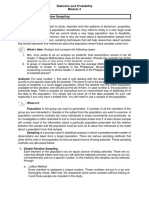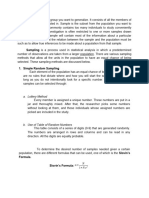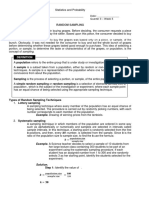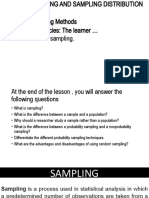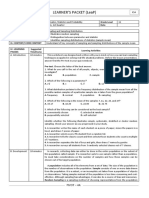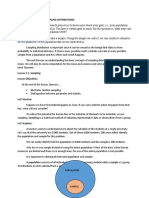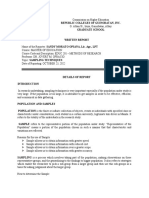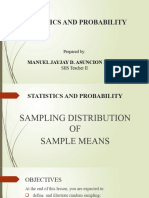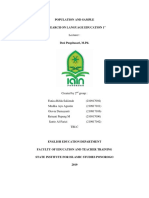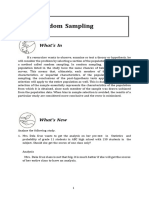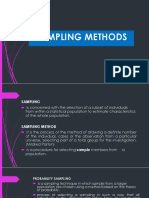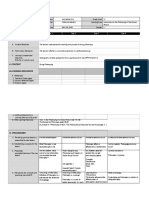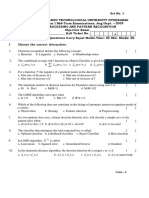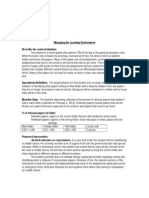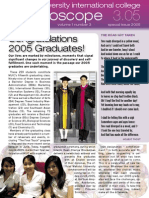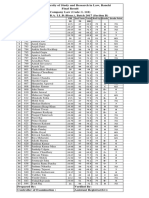0% found this document useful (0 votes)
16 views4 pagesLearning Plan For Statistics and Probablity 11 Lesson 8
The document outlines a learning plan for an 11th-grade Statistics and Probability class focused on random sampling. It includes lesson objectives, performance standards, materials, and a detailed lesson procedure covering various sampling techniques such as simple random sampling, systematic random sampling, stratified random sampling, and clustered sampling. The plan also incorporates practical applications and assignments for students to engage with the concepts learned.
Uploaded by
ivyjaneCopyright
© © All Rights Reserved
We take content rights seriously. If you suspect this is your content, claim it here.
Available Formats
Download as PDF, TXT or read online on Scribd
0% found this document useful (0 votes)
16 views4 pagesLearning Plan For Statistics and Probablity 11 Lesson 8
The document outlines a learning plan for an 11th-grade Statistics and Probability class focused on random sampling. It includes lesson objectives, performance standards, materials, and a detailed lesson procedure covering various sampling techniques such as simple random sampling, systematic random sampling, stratified random sampling, and clustered sampling. The plan also incorporates practical applications and assignments for students to engage with the concepts learned.
Uploaded by
ivyjaneCopyright
© © All Rights Reserved
We take content rights seriously. If you suspect this is your content, claim it here.
Available Formats
Download as PDF, TXT or read online on Scribd
/ 4

